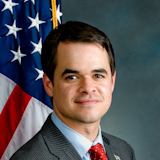- In Committee Assembly
- In Committee Senate
- On Floor Calendar Assembly
- On Floor Calendar Senate
- Passed Assembly
- Passed Senate
| Assembly Actions - Lowercase Senate Actions - UPPERCASE | |
|---|---|
| Jan 22, 2019 | signed chap.1 delivered to governor returned to senate passed assembly ordered to third reading cal.1 substituted for a21 referred to codes delivered to assembly passed senate ordered to third reading cal.33 reported and committed to rules |
| Jan 09, 2019 | referred to health |
-
View Votes
- View Rules Committee vote details
- View Health Committee vote details
Jan 22, 2019 - Floor Vote
-
View Floor vote details
Floor Vote: Jan 22, 2019
Jan 22, 2019 - Rules Committee Vote
Aye with ReservationsRules Committee Vote: Jan 22, 2019
Jan 22, 2019 - Health Committee Vote
Aye with ReservationsHealth Committee Vote: Jan 22, 2019
co-Sponsors

(D, WF) 35th Senate District

(D) 36th Senate District

(D) Senate District

(D, WF) Senate District
View additional co-sponsors
(D, WF) 46th Senate District

(D) Senate District

(D) Senate District

(D) 14th Senate District

(D) Senate District

(D, WF) 12th Senate District

(D) 26th Senate District

(D, WF) 40th Senate District

(D, WF) 47th Senate District

(D, WF) 31st Senate District

(D) Senate District

(D, IP, WF) Senate District

(D) 27th Senate District

(D, WF) Senate District

(D) 16th Senate District

(D, WF) 48th Senate District

(D, WF) 37th Senate District

(D, WF) Senate District

(D) Senate District

(D) 20th Senate District

(D, WF) 21st Senate District

(D) 19th Senate District

(D, WF) 13th Senate District

(D, WF) 33rd Senate District

(D, WF) 18th Senate District

(D) 10th Senate District

(D, IP) Senate District

(D) 32nd Senate District

(D, WF) 29th Senate District

(D) 42nd Senate District

(D) 11th Senate District

(D) 6th Senate District
2019-S240 (ACTIVE) - Details
See Assembly Version of this Bill: A21 Law Section: Public Health Law Laws Affected: Add Art 25-A §2599-aa, rpld §4164, Pub Health L; rpld §6811 sub 8, Ed L; rpld §§125.40 - 125.60, §125.05 subs 2 & 3, §125.15 sub 2, §125.20 sub 3, amd Art 125 Art Head, §§125.00 & 125.05, Pen L; amd §700.05, CP L; amd §673, County L; amd §4, Judy L Versions Introduced in 2017-2018 Legislative Session: S2796, A1748
2019-S240 (ACTIVE) - Summary
Enacts the reproductive health act; revises provisions of law relating to abortion.
2019-S240 (ACTIVE) - Sponsor Memo
BILL NUMBER: S240 SPONSOR: KRUEGER TITLE OF BILL: An act to amend the public health law, in relation to enacting the reproductive health act and revising existing provisions of law regarding abortion; to amend the penal law, the criminal procedure law, the county law and the judiciary law, in relation to abortion; to repeal certain provisions of the public health law relating to abortion; to repeal certain provisions of the education law relating to the sale of contraceptives; and to repeal certain provisions of the penal law relating to abortion PURPOSE OR GENERAL IDEA OF BILL: Relates to access to reproductive services. SUMMARY OF PROVISIONS: Section 1 of the bill establishes the legislative intent. Section 2 of the bill creates a new Article 25-A of the Public Health
Law (PHL), which includes section 2599-aa, Policy and Purpose, and section 2599-bb, Abortion, which states that an abortion may be performed by a licensed, certified, or authorized practitioner within 24 weeks from the commencement of pregnancy, or there is an absence of fetal viability, or at any time when necessary to protect a patient's life or health. Section 3 of the bill repeals § 4164 of the Public Health Law. Section 4 of the bill repeals § 6811 of the Education Law. Section 5 of the bill repeals Penal Law SS 125.40, 125.45, 125.50, 120.55 and 125.60 and amends the article heading of Article 125. Section 6 of the bill amends Penal Law § 125.00. Section 7 of the bill amends Penal Law § 125.05. Section 7-a of the bill repeals subdivisions 2 and 3 of § 125.05 of the Penal Law. Section 8 of the bill repeals subdivision 2 of § 125.15 of the Penal Law. Section 9 of the bill repeals subdivisions 3 of § 125.20 of the Penal Law. Sections 10, 11, and 12 of the bill make conforming changes by removing references to the crime of abortion in the Criminal Procedure Law, the County Law, and the Judiciary Law. Section 13 of the bill creates a severability clause. Section 14 sets forth the effective date. JUSTIFICATION: In 1970, New York legalized abortion in some circumstances, thereby recognizing that a woman has a fundamental right to make medical deci- sions about the course of a pregnancy. Three years later, the Supreme Court of the United States issued its landmark decision in (Roe v. Wade), 410 U.S. 113 (1973), holding that this fundamental right is protected by the United States Constitution. During the decades since (Roe v. Wade) was decided, there have been numerous court decisions clarifying the scope of the right to abortion but, unfortunately, New York's laws have remained outdated. Further- more, it is clear that some provisions of New York law are unconstitu- tional and have proved burdensome to women seeking to assert their constitutionally protected right to an abortion. This bill updates New York's abortion statutes to address constitutional flaws in our laws and recognize a woman's fundamental right to access safe, legal abortion. LEGISLATIVE HISTORY: 2017: A.1748 of 2017-2018 (Glick) Passed Assembly in 2017 and 2018 S.2796 of 2017-2018 (Krueger, Stewart-Cousins) Defeated in Health FISCAL IMPLICATIONS: None. EFFECTIVE DATE: This act shall take effect immediately.
2019-S240 (ACTIVE) - Bill Text download pdf
S T A T E O F N E W Y O R K ________________________________________________________________________ S. 240 A. 21 2019-2020 Regular Sessions S E N A T E - A S S E M B L Y (PREFILED) January 9, 2019 ___________ IN SENATE -- Introduced by Sens. KRUEGER, STEWART-COUSINS, BAILEY, BENJAMIN, BIAGGI, BRESLIN, BROOKS, COMRIE, GAUGHRAN, GIANARIS, GOUNARDES, HARCKHAM, HOYLMAN, JACKSON, KAMINSKY, KAPLAN, KENNEDY, LIU, MARTINEZ, MAY, MAYER, METZGER, MYRIE, PARKER, PERSAUD, RAMOS, RIVERA, SALAZAR, SANDERS, SAVINO, SEPULVEDA, SERRANO, SKOUFIS, THOMAS -- read twice and ordered printed, and when printed to be committed to the Committee on Health IN ASSEMBLY -- Introduced by M. of A. GLICK, GOTTFRIED, LUPARDO, HEAST- IE, PEOPLES-STOKES, JAFFEE, TITUS, SIMOTAS, L. ROSENTHAL, O'DONNELL, CAHILL, SOLAGES, ABINANTI, ARROYO, BARRETT, BARRON, BICHOTTE, BLAKE, BRAUNSTEIN, BRONSON, BUCHWALD, CARROLL, COOK, CYMBROWITZ, DE LA ROSA, DenDEKKER, DILAN, DINOWITZ, D'URSO, ENGLEBRIGHT, FAHY, GALEF, GANTT, HEVESI, HUNTER, HYNDMAN, JEAN-PIERRE, JONES, KIM, LAVINE, LIFTON, MAGNARELLI, MOSLEY, NOLAN, OTIS, PAULIN, PERRY, PHEFFER AMATO, PICHAR- DO, PRETLOW, QUART, RODRIGUEZ, ROZIC, SEAWRIGHT, SIMON, STECK, STIRPE, THIELE, WALLACE, WEINSTEIN, WEPRIN, WILLIAMS, WOERNER, WRIGHT, NIOU, ORTIZ, FERNANDEZ, GRIFFIN -- Multi-Sponsored by -- M. of A. EPSTEIN -- read once and referred to the Committee on Health AN ACT to amend the public health law, in relation to enacting the reproductive health act and revising existing provisions of law regarding abortion; to amend the penal law, the criminal procedure law, the county law and the judiciary law, in relation to abortion; to repeal certain provisions of the public health law relating to abortion; to repeal certain provisions of the education law relating to the sale of contraceptives; and to repeal certain provisions of the penal law relating to abortion THE PEOPLE OF THE STATE OF NEW YORK, REPRESENTED IN SENATE AND ASSEM- BLY, DO ENACT AS FOLLOWS: EXPLANATION--Matter in ITALICS (underscored) is new; matter in brackets [ ] is old law to be omitted. SA LBD05658-02-9
S. 240 2 A. 21 Section 1. Legislative intent. The legislature finds that comprehen- sive reproductive health care, including contraception and abortion, is a fundamental component of a woman's health, privacy and equality. The New York Constitution and United States Constitution protect a woman's fundamental right to access safe, legal abortion, courts have repeatedly reaffirmed this right and further emphasized that states may not place undue burdens on women seeking to access such right. Moreover, the legislature finds, as with other medical procedures, the safety of abortion is furthered by evidence-based practices developed and supported by medical professionals. Abortion is one of the safest medical procedures performed in the United States; the goal of medical regulation should be to improve the quality and availability of health care services. Furthermore, the legislature declares that it is the public policy of New York State that every individual possesses a fundamental right of privacy and equality with respect to their personal reproductive deci- sions and should be able to safely effectuate those decisions, including by seeking and obtaining abortion care, free from discrimination in the provision of health care. Therefore, it is the intent of the legislature to prevent the enforce- ment of laws or regulations that are not in furtherance of a legitimate state interest in protecting a woman's health that burden abortion access. § 2. The public health law is amended by adding a new article 25-A to read as follows: ARTICLE 25-A REPRODUCTIVE HEALTH ACT SECTION 2599-AA. POLICY AND PURPOSE. 2599-BB. ABORTION. § 2599-AA. POLICY AND PURPOSE. THE LEGISLATURE FINDS THAT COMPREHEN- SIVE REPRODUCTIVE HEALTH CARE IS A FUNDAMENTAL COMPONENT OF EVERY INDI- VIDUAL'S HEALTH, PRIVACY AND EQUALITY. THEREFORE, IT IS THE POLICY OF THE STATE THAT: 1. EVERY INDIVIDUAL HAS THE FUNDAMENTAL RIGHT TO CHOOSE OR REFUSE CONTRACEPTION OR STERILIZATION. 2. EVERY INDIVIDUAL WHO BECOMES PREGNANT HAS THE FUNDAMENTAL RIGHT TO CHOOSE TO CARRY THE PREGNANCY TO TERM, TO GIVE BIRTH TO A CHILD, OR TO HAVE AN ABORTION, PURSUANT TO THIS ARTICLE. 3. THE STATE SHALL NOT DISCRIMINATE AGAINST, DENY, OR INTERFERE WITH THE EXERCISE OF THE RIGHTS SET FORTH IN THIS SECTION IN THE REGULATION OR PROVISION OF BENEFITS, FACILITIES, SERVICES OR INFORMATION. § 2599-BB. ABORTION. 1. A HEALTH CARE PRACTITIONER LICENSED, CERTI- FIED, OR AUTHORIZED UNDER TITLE EIGHT OF THE EDUCATION LAW, ACTING WITH- IN HIS OR HER LAWFUL SCOPE OF PRACTICE, MAY PERFORM AN ABORTION WHEN, ACCORDING TO THE PRACTITIONER'S REASONABLE AND GOOD FAITH PROFESSIONAL JUDGMENT BASED ON THE FACTS OF THE PATIENT'S CASE: THE PATIENT IS WITHIN TWENTY-FOUR WEEKS FROM THE COMMENCEMENT OF PREGNANCY, OR THERE IS AN ABSENCE OF FETAL VIABILITY, OR THE ABORTION IS NECESSARY TO PROTECT THE PATIENT'S LIFE OR HEALTH. 2. THIS ARTICLE SHALL BE CONSTRUED AND APPLIED CONSISTENT WITH AND SUBJECT TO APPLICABLE LAWS AND APPLICABLE AND AUTHORIZED REGULATIONS GOVERNING HEALTH CARE PROCEDURES. § 3. Section 4164 of the public health law is REPEALED. § 4. Subdivision 8 of section 6811 of the education law is REPEALED. S. 240 3 A. 21 § 5. Sections 125.40, 125.45, 125.50, 125.55 and 125.60 of the penal law are REPEALED, and the article heading of article 125 of the penal law is amended to read as follows: HOMICIDE[, ABORTION] AND RELATED OFFENSES § 6. Section 125.00 of the penal law is amended to read as follows: § 125.00 Homicide defined. Homicide means conduct which causes the death of a person [or an unborn child with which a female has been pregnant for more than twen- ty-four weeks] under circumstances constituting murder, manslaughter in the first degree, manslaughter in the second degree, OR criminally negligent homicide[, abortion in the first degree or self-abortion in the first degree]. § 7. The section heading, opening paragraph and subdivision 1 of section 125.05 of the penal law are amended to read as follows: Homicide[, abortion] and related offenses; [definitions of terms] DEFINITION. The following [definitions are] DEFINITION IS applicable to this arti- cle: [1.] "Person," when referring to the victim of a homicide, means a human being who has been born and is alive. § 7-a. Subdivisions 2 and 3 of section 125.05 of the penal law are REPEALED. § 8. Subdivision 2 of section 125.15 of the penal law is REPEALED. § 9. Subdivision 3 of section 125.20 of the penal law is REPEALED. § 10. Paragraph (b) of subdivision 8 of section 700.05 of the criminal procedure law, as amended by chapter 189 of the laws of 2018, is amended to read as follows: (b) Any of the following felonies: assault in the second degree as defined in section 120.05 of the penal law, assault in the first degree as defined in section 120.10 of the penal law, reckless endangerment in the first degree as defined in section 120.25 of the penal law, promot- ing a suicide attempt as defined in section 120.30 of the penal law, strangulation in the second degree as defined in section 121.12 of the penal law, strangulation in the first degree as defined in section 121.13 of the penal law, criminally negligent homicide as defined in section 125.10 of the penal law, manslaughter in the second degree as defined in section 125.15 of the penal law, manslaughter in the first degree as defined in section 125.20 of the penal law, murder in the second degree as defined in section 125.25 of the penal law, murder in the first degree as defined in section 125.27 of the penal law, [abortion in the second degree as defined in section 125.40 of the penal law, abortion in the first degree as defined in section 125.45 of the penal law,] rape in the third degree as defined in section 130.25 of the penal law, rape in the second degree as defined in section 130.30 of the penal law, rape in the first degree as defined in section 130.35 of the penal law, criminal sexual act in the third degree as defined in section 130.40 of the penal law, criminal sexual act in the second degree as defined in section 130.45 of the penal law, criminal sexual act in the first degree as defined in section 130.50 of the penal law, sexual abuse in the first degree as defined in section 130.65 of the penal law, unlawful imprisonment in the first degree as defined in section 135.10 of the penal law, kidnapping in the second degree as defined in section 135.20 of the penal law, kidnapping in the first degree as defined in section 135.25 of the penal law, labor trafficking as defined in section 135.35 of the penal law, aggravated labor trafficking as defined in section 135.37 of the penal law, custodial interference in the first S. 240 4 A. 21 degree as defined in section 135.50 of the penal law, coercion in the first degree as defined in section 135.65 of the penal law, criminal trespass in the first degree as defined in section 140.17 of the penal law, burglary in the third degree as defined in section 140.20 of the penal law, burglary in the second degree as defined in section 140.25 of the penal law, burglary in the first degree as defined in section 140.30 of the penal law, criminal mischief in the third degree as defined in section 145.05 of the penal law, criminal mischief in the second degree as defined in section 145.10 of the penal law, criminal mischief in the first degree as defined in section 145.12 of the penal law, criminal tampering in the first degree as defined in section 145.20 of the penal law, arson in the fourth degree as defined in section 150.05 of the penal law, arson in the third degree as defined in section 150.10 of the penal law, arson in the second degree as defined in section 150.15 of the penal law, arson in the first degree as defined in section 150.20 of the penal law, grand larceny in the fourth degree as defined in section 155.30 of the penal law, grand larceny in the third degree as defined in section 155.35 of the penal law, grand larceny in the second degree as defined in section 155.40 of the penal law, grand larceny in the first degree as defined in section 155.42 of the penal law, health care fraud in the fourth degree as defined in section 177.10 of the penal law, health care fraud in the third degree as defined in section 177.15 of the penal law, health care fraud in the second degree as defined in section 177.20 of the penal law, health care fraud in the first degree as defined in section 177.25 of the penal law, robbery in the third degree as defined in section 160.05 of the penal law, robbery in the second degree as defined in section 160.10 of the penal law, robbery in the first degree as defined in section 160.15 of the penal law, unlawful use of secret scientific material as defined in section 165.07 of the penal law, criminal possession of stolen property in the fourth degree as defined in section 165.45 of the penal law, criminal possession of stolen property in the third degree as defined in section 165.50 of the penal law, criminal possession of stolen property in the second degree as defined by section 165.52 of the penal law, criminal possession of stolen property in the first degree as defined by section 165.54 of the penal law, trademark counterfeiting in the second degree as defined in section 165.72 of the penal law, trademark counterfeiting in the first degree as defined in section 165.73 of the penal law, forgery in the second degree as defined in section 170.10 of the penal law, forgery in the first degree as defined in section 170.15 of the penal law, criminal possession of a forged instrument in the second degree as defined in section 170.25 of the penal law, criminal possession of a forged instru- ment in the first degree as defined in section 170.30 of the penal law, criminal possession of forgery devices as defined in section 170.40 of the penal law, falsifying business records in the first degree as defined in section 175.10 of the penal law, tampering with public records in the first degree as defined in section 175.25 of the penal law, offering a false instrument for filing in the first degree as defined in section 175.35 of the penal law, issuing a false certificate as defined in section 175.40 of the penal law, criminal diversion of prescription medications and prescriptions in the second degree as defined in section 178.20 of the penal law, criminal diversion of prescription medications and prescriptions in the first degree as defined in section 178.25 of the penal law, residential mortgage fraud in the fourth degree as defined in section 187.10 of the penal law, residential mortgage fraud in the third degree as defined in section S. 240 5 A. 21 187.15 of the penal law, residential mortgage fraud in the second degree as defined in section 187.20 of the penal law, residential mortgage fraud in the first degree as defined in section 187.25 of the penal law, escape in the second degree as defined in section 205.10 of the penal law, escape in the first degree as defined in section 205.15 of the penal law, absconding from temporary release in the first degree as defined in section 205.17 of the penal law, promoting prison contraband in the first degree as defined in section 205.25 of the penal law, hindering prosecution in the second degree as defined in section 205.60 of the penal law, hindering prosecution in the first degree as defined in section 205.65 of the penal law, sex trafficking as defined in section 230.34 of the penal law, sex trafficking of a child as defined in section 230.34-a of the penal law, criminal possession of a weapon in the third degree as defined in subdivisions two, three and five of section 265.02 of the penal law, criminal possession of a weapon in the second degree as defined in section 265.03 of the penal law, criminal possession of a weapon in the first degree as defined in section 265.04 of the penal law, manufacture, transport, disposition and defacement of weapons and dangerous instruments and appliances defined as felonies in subdivisions one, two, and three of section 265.10 of the penal law, sections 265.11, 265.12 and 265.13 of the penal law, or prohibited use of weapons as defined in subdivision two of section 265.35 of the penal law, relating to firearms and other dangerous weapons, or failure to disclose the origin of a recording in the first degree as defined in section 275.40 of the penal law; § 11. Subdivision 1 of section 673 of the county law, as added by chapter 545 of the laws of 1965, is amended to read as follows: 1. A coroner or medical examiner has jurisdiction and authority to investigate the death of every person dying within his county, or whose body is found within the county, which is or appears to be: (a) A violent death, whether by criminal violence, suicide or casual- ty; (b) A death caused by unlawful act or criminal neglect; (c) A death occurring in a suspicious, unusual or unexplained manner; (d) [A death caused by suspected criminal abortion; (e)] A death while unattended by a physician, so far as can be discov- ered, or where no physician able to certify the cause of death as provided in the public health law and in form as prescribed by the commissioner of health can be found; [(f)] (E) A death of a person confined in a public institution other than a hospital, infirmary or nursing home. § 12. Section 4 of the judiciary law, as amended by chapter 264 of the laws of 2003, is amended to read as follows: § 4. Sittings of courts to be public. The sittings of every court within this state shall be public, and every citizen may freely attend the same, except that in all proceedings and trials in cases for divorce, seduction, [abortion,] rape, assault with intent to commit rape, criminal sexual act, bastardy or filiation, the court may, in its discretion, exclude therefrom all persons who are not directly inter- ested therein, excepting jurors, witnesses, and officers of the court. § 13. Severability. If any provision of this act, or any application of any provision of this act, is held to be invalid, that shall not affect the validity or effectiveness of any other provision of this act, or of any other application of any provision of this act, which can be given effect without that provision or application; and to that end, the provisions and applications of this act are severable. S. 240 6 A. 21 § 14. This act shall take effect immediately.